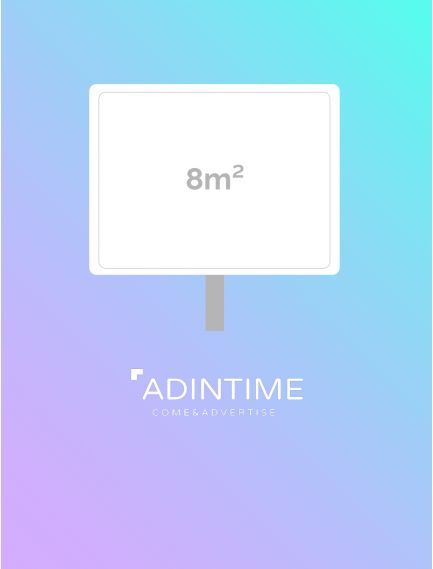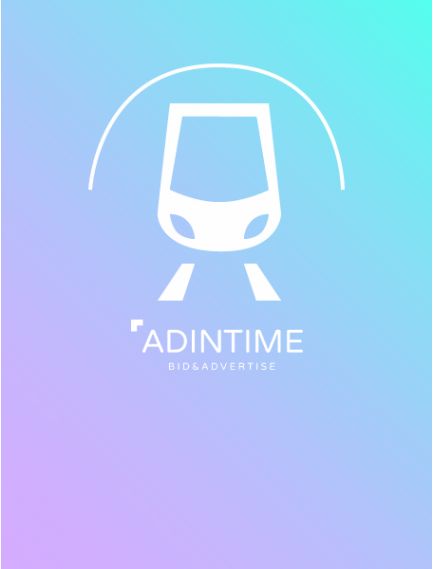Commercial advertising is a crucial pillar in the world of marketing and communication. It enables businesses to promote their products and services, attract new customers, and strengthen their brand image. But what exactly is "commercial advertising"? This article will help you discover the definition, types, and objectives of effective commercial advertising.
Definition of commercial advertising
Commercial advertising is a form of paid communication, broadcasted through various media, aiming to promote a product, service, or brand. Its goal is to influence consumer behavior by persuasively presenting the benefits and features of the offers. This definition encompasses a wide range of formats, from printed ads in newspapers to digital ads on social media, and television commercials.
Origins and evolution of commercial advertising
The earliest forms of commercial advertising date back to antiquity, where messages were engraved on stones or displayed in markets to promote products. With the invention of the printing press in the 15th century, advertising took on a new dimension, allowing for broader dissemination of announcements. Over the centuries, commercial advertising has evolved in response to technological and cultural changes, transitioning from simple posters and print ads to sophisticated multimedia campaigns. The digital age has transformed advertising into a complex field where targeting and personalization have become essential.
Key characteristics of effective commercial advertising
Effective commercial advertising is distinguished by several key characteristics. First, it must capture the target audience's attention with a clear and attractive message. Next, it must be persuasive, highlighting the benefits and arguments that will encourage consumers to take action, whether it be to purchase a product, subscribe to a service, or strengthen their loyalty to a brand. Finally, effective advertising must be well-targeted, meaning it should be designed and broadcasted with the specificities of the target audience in mind, whether in terms of demographics, behaviors, or preferences.
These characteristics are crucial to maximizing the impact of an advertising campaign and achieving the company's objectives.
Different types of commercial advertising
Traditional advertising: billboards, print, radio, and television
Traditional advertising includes communication channels that have existed for decades and remain widely used today. Billboard advertising, for example, includes the billboards seen on streets, in subway stations, or on buses. This type of advertising aims to capture the attention of passersby and maximize the visibility of a brand or product in high-traffic areas.
Press advertising, on the other hand, has long been a favored channel for advertisements, whether in newspapers or magazines. Although its influence has somewhat diminished with the rise of digital media, it remains a preferred medium for reaching specific segments of the population, especially regular readers of specialized publications.
Radio and television offer unique mass communication opportunities. Radio ads allow targeting of listeners based on their listening habits, while television advertising benefit from strong visual and emotional impact, enabling a direct connection with viewers. These traditional media are often used in conjunction with other channels to maximize the impact of an advertising campaign.
Digital advertising: display, search, social media, and online video
With the rise of the internet and digital technologies, digital advertising has become essential for companies looking to reach a broader and more targeted audience. Display ads, for instance, are visual advertisements that appear on websites, often in the form of banners or inserts. They capture the attention of users during their browsing and are often used for brand awareness campaigns.
Search advertising involves placing ads based on keywords searched by users. This type of advertising is particularly effective in attracting qualified prospects, as it directly addresses search intent.
Social media platforms also provide fertile ground for advertising. Whether on Facebook, Instagram, LinkedIn, or Twitter, businesses can target specific audiences based on demographic, behavioral, or interest criteria. Additionally, social media ad formats are varied, ranging from simple images to interactive videos, offering great flexibility in campaign creation.
Finally, online video advertising, found on platforms like YouTube, creates strong user engagement through compelling visual and narrative content. Videos have become a central element of online advertising strategies due to their ability to convey complex messages in an engaging way.
Multichannel advertising: the importance of an integrated strategy
Multichannel advertising involves delivering a consistent message across various advertising channels to maximize the impact of a campaign. This integrated approach allows companies to reach their target audience on multiple fronts, thereby enhancing message recall and consumer engagement.
By combining the strengths of traditional and digital media, a multichannel advertising strategy can, for instance, pair a billboard campaign with television commercials while using social media and search advertising to enhance online visibility. This synergy between channels creates a richer and more coherent user experience, increasing the chances of success for an advertising campaign.
In a context where consumers are exposed to numerous messages daily, a well-orchestrated multichannel strategy is essential to stand out and maximize the effectiveness of advertising investments.
Objectives and benefits of commercial advertising for businesses
Commercial advertising plays a crucial role in the marketing strategy of businesses by enabling them to achieve several key objectives. First, it contributes to increasing brand awareness and visibility. By broadcasting impactful messages across various platforms, businesses can reach a broader audience, attract new customers, and stand out from the competition. A well-established brand enjoys better recognition, which is essential to gain consumer trust and encourage them to choose its products or services.
Furthermore, commercial advertising is a powerful lever for lead generation and sales stimulation. By convincingly presenting the benefits of a product or service, it encourages consumers to take action. Well-targeted advertising campaigns can reach prospects at the right moment when they are ready to purchase, thus increasing the conversion rate and the company's revenue. Moreover, advertising can be used to promote special offers, product launches, or events, thereby boosting short-term sales.
Finally, commercial advertising plays an essential role in customer retention and brand image enhancement. By maintaining regular communication with existing customers, businesses can strengthen their relationship with them, encouraging them to remain loyal to the brand. A well-designed ad can also convey the company's values, improve its reputation, and create an emotional connection with consumers. In the long term, this helps build a strong and resilient brand capable of withstanding market fluctuations and standing out from the competition.
Measuring the effectiveness of commercial advertising
To maximize the impact of an advertising campaign, it is essential to measure its effectiveness using various tools and techniques. This not only allows for evaluating return on investment (ROI) but also optimizing future campaigns based on the results obtained.
One of the most commonly used methods to evaluate an advertising campaign is tracking key performance indicators (KPIs). These indicators can include measures such as click-through rate (CTR), cost per acquisition (CPA), conversion rate, or ROI. Each KPI provides a different perspective on the campaign's performance, whether in terms of reach, engagement, or profitability. The choice of KPIs should align with the specific goals of the campaign, whether it is to increase brand awareness, generate leads, or boost sales.
In addition to tracking KPIs, using advanced analytics tools is crucial for gaining deeper insights. Platforms like Google Analytics, for example, allow real-time tracking of user interactions with ads and analyzing post-click behavior. Moreover, marketing automation solutions can be used to track the customer journey more granularly, from the first contact to the final conversion. These tools help advertisers identify friction points in the customer journey and adjust their strategy accordingly.
A/B testing is another crucial technique for optimizing an advertising campaign. It involves testing different versions of an ad, whether variations in text, visuals, or calls to action, to determine which performs best. By comparing the results obtained for each version, advertisers can identify the most effective elements and incorporate them into the main campaign. This continuous optimization process is essential to maximize the results of an advertising campaign and ensure it achieves its objectives effectively.
In summary, measuring the effectiveness of commercial advertising is a complex process that requires the use of analytical tools, KPI tracking, and optimization techniques like A/B testing. While this topic is often covered in many articles, it remains crucial to understand the importance of these practices to get the most out of advertising investments.
Trends and innovations in commercial advertising
The rise of programmatic advertising and AI
Programmatic advertising has revolutionized the advertising landscape by automating the buying and selling of online ad spaces. Thanks to sophisticated algorithms and artificial intelligence (AI), advertisers can now deliver ads in real-time, based on user profiles and the context in which they find themselves. This approach allows for ultra-precise targeting of the most relevant audiences for a brand while optimizing the efficiency of advertising budgets.
AI plays a crucial role in this evolution by analyzing vast amounts of data to identify ad space purchase opportunities in a fraction of a second. This maximizes return on investment (ROI) by ensuring that ads are shown to the right people, at the right time, and on the right platform. Programmatic advertising also has the advantage of reducing operational costs and improving transparency, as advertisers can track the performance of their campaigns in real-time and adjust their strategies accordingly.
Personalization and advanced audience targeting
Personalization has become a key element of modern commercial advertising. Today's consumers expect brands to offer tailored experiences that meet their needs and preferences. To meet this demand, advertisers use advanced technologies to collect and analyze data on user behaviors, interests, and previous interactions with the brand.
With these insights, it is possible to create highly personalized ads that resonate more strongly with the target audience. For instance, a fashion brand could show ads for specific products that a user recently viewed on its website or offer promotional deals based on past purchases. This level of personalization enhances consumer engagement and increases the likelihood of conversion.
Advanced targeting also allows reaching highly specific audience segments, based on criteria such as age, gender, geographic location, or online behavior. By combining personalization and targeting techniques, advertisers can maximize the effectiveness of their campaigns and improve the user experience.
Increasing integration between online and offline advertising
The line between online and offline advertising is becoming increasingly blurred with the evolution of technologies and consumer behaviors. Multichannel campaigns, which combine online elements (such as display ads and social media) with traditional media (television, radio, billboards), help create consistent advertising experiences.
This integration facilitates tracking and measuring campaign impact on sales, for example, through online tracking pixels or mobile loyalty apps. By unifying online and offline efforts, brands strengthen the consistency of their message and maximize campaign effectiveness.
Maximizing the impact of your commercial advertisements with a multichannel approach
In an increasingly complex and competitive advertising environment, adopting a multichannel approach has become essential to maximize the impact of your advertising campaigns. By combining the strengths of online and offline advertising, leveraging technological advancements such as programmatic advertising and artificial intelligence, and personalizing your messages to meet the specific expectations of your audience, you can create more engaging and effective advertising experiences.
A well-orchestrated multichannel strategy allows you to reach your consumers at different touchpoints, thereby strengthening your brand awareness, boosting sales, and promoting customer loyalty. By investing in integrated advertising campaigns and continuously testing and optimizing your efforts, you will be able to maximize return on investment and maintain a competitive position in the market.
Ultimately, the key to success lies in the ability to adapt your advertising strategies to market changes and the evolving needs of your consumers, while leveraging available technologies and data to make informed and effective decisions.




 Top 30 best ads musics
Top 30 best ads musics
 The influence of advertising on purchasing behavior
The influence of advertising on purchasing behavior
 Top of the most listened podcasts in France
Top of the most listened podcasts in France
 Top 30 best ads 2021 in France
Top 30 best ads 2021 in France
 This Year Marketing Calendar
This Year Marketing Calendar
 OOH Advertising: My honest review
OOH Advertising: My honest review
 Facebook Ads Library: The ultimate guide to winning campaigns
Facebook Ads Library: The ultimate guide to winning campaigns
 How to prepare your advertising campaigns for Christmas?
How to prepare your advertising campaigns for Christmas?
 The top 20 ad films of the year
The top 20 ad films of the year
 Example of a unique selling proposition
Example of a unique selling proposition










